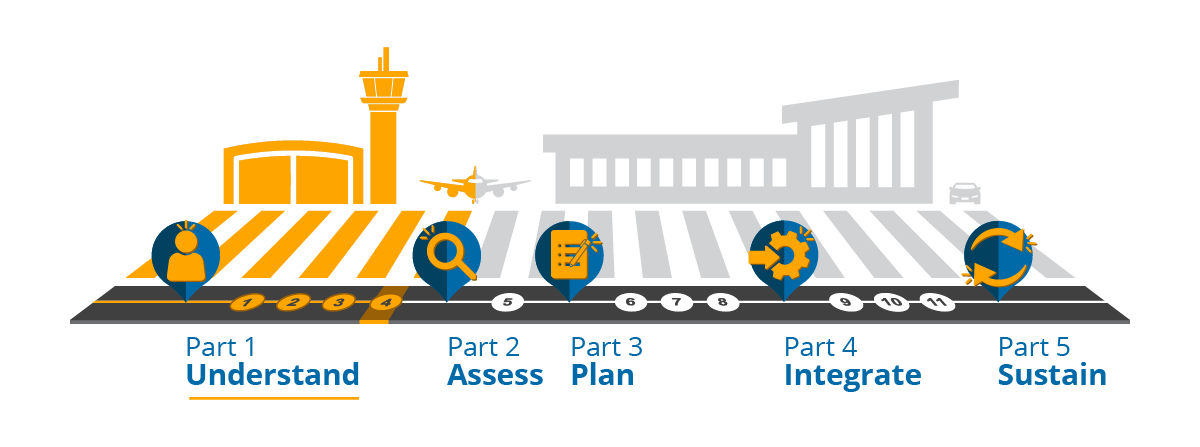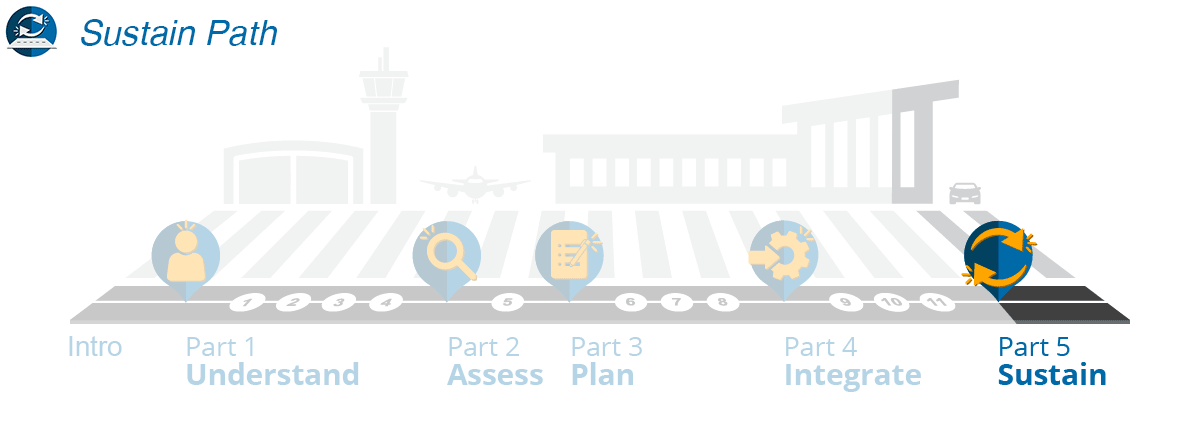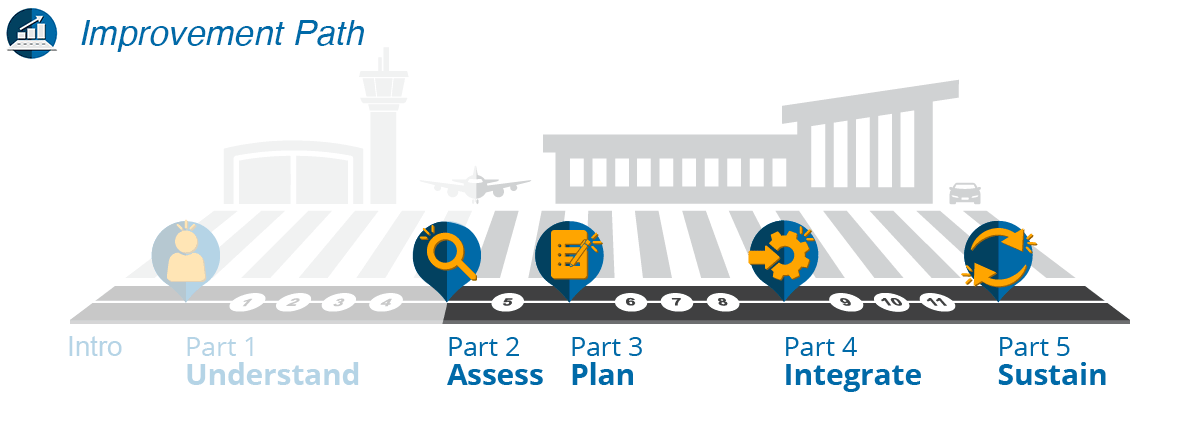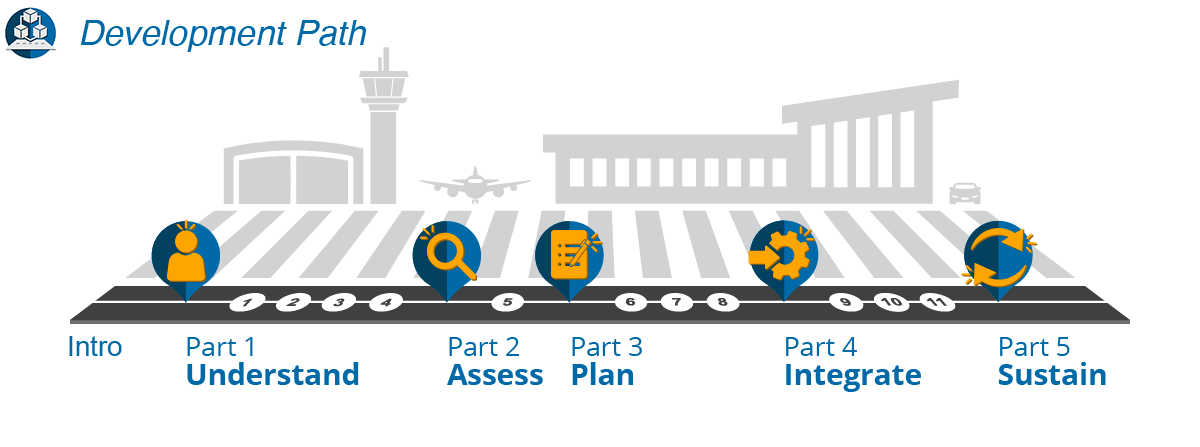
Step 4: Understand the Challenges of Using Social Media in Emergency Management
Technology
Although most individuals are at least familiar with the basic end user functions of SM, those without experience in the management functions of SM will find building an SMEM program challenging. There is a learning curve associated with selecting the right channels to monitor, tools to implement, and integration options required to develop an SMEM program. This is especially true for smaller airports or those airport operators just beginning to use SM. Those implementing an SMEM program for the first time should expect to invest time and effort in the following:
- Understanding the nature of SM and the various tools and uses
- Identifying the right SM channels on which to establish a presence
- Considering operating costs
Understanding the Nature of Social Media and the Various Tools and Uses
If you are just starting out, expect to devote a considerable amount of time to evaluating what SM channels and tools are best for you. After this evaluation, you may even choose to delay your integration until your SM program itself is more mature. This is where SM and EM managers can lean on each other’s understanding.
Additionally, some airport operators have hired consultants to assist in choosing SM platforms in building the SM programs. Some airport operators have also chosen to augment their staff with outside vendors to conduct SM management services such as listening. In building your SMEM program, consider collaborating with operators of similarly sized airports to understand their best practices for managing SM, incorporating SM into existing EM plans, and choosing channels.
If you have not yet done so, refer to the SM Tools tab, Steps 1 and 2, and the Resource tab to solidify your understanding of these issues.
Integrating New Technology into Existing Systems and Processes
Introducing a new communication-based technology poses many challenges. These include assessing your existing network system for appropriate bandwidth and redundancies, integrating with existing systems, conducting testing and employee training, and managing unexpected costs. You will need to plan for and overcome these challenges. Although managing these challenges can be difficult, there are many ways of addressing them. Most importantly, you will need to work with your information technology team throughout the planning effort to provide input and support for the solutions you identify. This includes appropriate planning for cybersecurity and impacts to communications hardware and/or infrastructure.
Identifying the Right Social Media Channels on Which to Establish a Presence
In setting the vision, goals, and objectives for your SMEM program (see Steps 7 and 8), you may decide to integrate SM publishing and engagement. One of the challenges associated with this is identifying the right SM channels on which to perform these functions. The short answer may be to start with Twitter as your listening and engagement channel since it is currently considered to be the most appropriate for SMEM. But the complete answer depends on what channels are used by the customers you serve and stakeholders with which you collaborate. Further, once you have established your SMEM program, we suggest that you regularly review the channels your stakeholders are using to confirm that you are still using the most appropriate ones.
If you elect to only integrate SM listening, this may not be a challenge for you; most SM listening tools allow you to monitor multiple channels. We suggest that, at a minimum, an airport operator develop a core SM listening capability. This can often be accomplished with a modest budget and implemented with existing staff. As you proceed through the steps and build your program, set reasonable expectations for yourself.
Considering Operating Costs
As a starting point, airport operators can typically expect to spend the following amounts annually on software tools for SM programs. These amounts are based on research performed at U.S. airports and the subject matter expertise of the research team and do not include staff and training costs:
- Small airports – free up to $1,200
- Regional airports – up to $24,000
- Large airports – over $60,000
Although these amounts may not initially seem significant to many, understanding the costs provides you with information necessary for obtaining and maintaining your SM budget when funding is tight.
For small airports or a simple integration, you may be able to use free features from SM channels. This can work well if your goals and objectives are in line with that level of resourcing. SM management suites with greater functionality and sophistication require more funding. For small airports or simple integration, you can also consider staff and contractor costs associated with SMEM. The SM Tools tab provides recommendations for selecting tools based on your airport size and level of integration.
Spending higher amounts will require appropriate justification to gain leadership support and approval and an analysis of internal and external resources. Regardless of airport size, if you want to implement a meaningful SMEM program, you should expect to budget on the higher end of the associated size spectrum. To do this, you may need to be creative to secure funding and garner the support for priority funding from your airport decision makers. In doing this, it can be beneficial to present leadership with tiered options for capabilities based on both functionality and funding level. See “Step 8: Define Your Social Media Integration” for more information on the tiered options.




